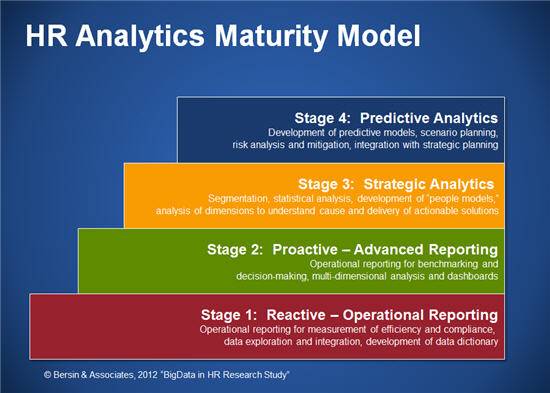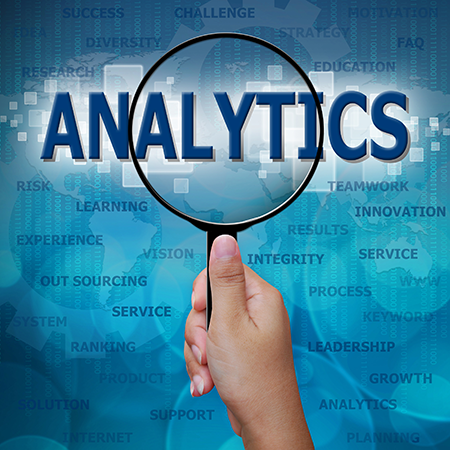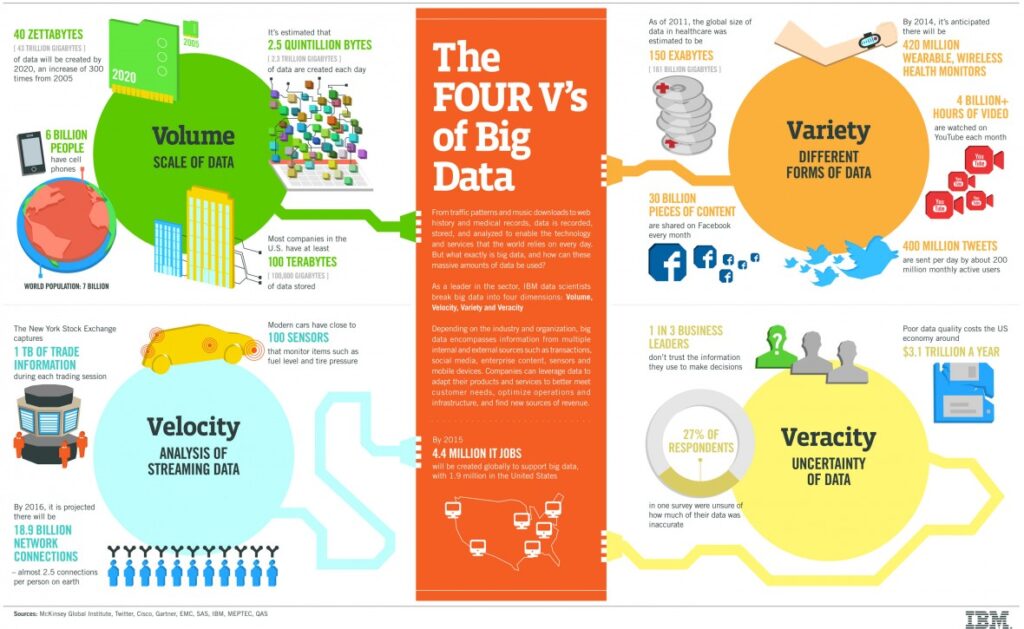Based on all the buzz in the media these days, you might think human resource departments everywhere are diving into big data and embracing HR analytics as a means of predicting more successful recruiting and succession planning outcomes with little or no real human involvement in the decision-making process. I would argue that is far from reality, and only the very large or very progressive companies have acquired the ability to truly perform meaningful and accurate HR analytics.
But if you’re like me, you like staying on top of new trends and, at the very least, understanding the terminology. And based on the success these enterprise-level companies have realized, not to mention the advancements marketing, sales and product management departments have achieved as a result of big data analysis, the movement is only going to get stronger. So it might prove helpful to be familiar with some of the more popular concepts many of your peers may be discussing –
HR Analytics – Why does that make me think of human robotics? Well, based on my research, it is actually a means of “improving employee performance and, therefore, getting a better return on investment (ROI)” by gathering data and using that data to make better decisions and improve processes. HR analytics correlates business data and people data to show the impact HR has on an organization, and to then create strategies to enhance outcomes. (source: Techopedia)
Can the analysis of data really lead to better decisions about the people we employ? As HR professionals, we’ve been trained to engage in live interactions with employees in order to promote a healthy, productive workforce. Does all that just get tossed out the window in favor of more spreadsheet analysis? Here’s an example of one company, Xerox, who might say, “yes!”
Xerox uses online evaluations that include personality testing, cognitive-skill assessment, and multiple-choice questions based on real-life scenarios. Responses are combined with other information about the candidates, then each is given a red, yellow or green rating. This study was detailed in an article which appeared in The Atlantic, titled “They’re Watching You at Work,” written by Don Peck. According to Peck, the testing resulted in a 20% decrease in attrition and an increase in promotions. Impressive! The results are hard to ignore.
Big Data – Suddenly, this term is everywhere. But what does it really mean? Bigger fonts? Longer numbers with multiple decimal points? As it turns out, the “big” is actually referring to the amount of data. And in this sense, data has always been big. According to Dictionary.com, the term “big data” refers to data sets, typically consisting of billions or trillions of records, that are so vast and complex that they require new and powerful computational resources to process. But many argue that it isn’t just about the volume of data, but also the velocity and variety of data. Doug Laney with Gartner actually defined big data as being based on volume, velocity and variety back in 2001. Others, including scientists at IBM, include another v-word – veracity – in their definition, meaning “the uncertainty of data,” as seen in their infographic on the topic, The Four V’s of Big Data.
Despite the definition, for me, it is still difficult to match the concept of big data with the traditional role human services professionals play in the workforce. But as I read Peck’s article in The Atlantic, it began to make more sense. Peck describes video games that are used to test applicants’ decision-making skills and algorithms that assess the quality of developers by searching the web for any open source code they have written, their participation on developer social forums, and even their preferences for websites not specifically related to programming.
According to the article, it is even possible to identify undervalued programmers based on the level of their activity on professional networking sites. Combine the developer’s high activity level with the fact that several other employees have recently left the organization at which the developer is employed, and the company’s stock price is dropping, and the developer’s receptiveness to a new job offer seems more likely. The ability to take all of the data gathered from these various resources and process it in a variety of ways is an example of big data at work. And to think that, just a few years ago, we were all just worried about “big daddy” and the idea that the government might be tracking our internet activity.
Predictive Analytics – This may be the modern term for “crystal ball,” the kind that let’s fortune tellers see into the future. But, defined as the practice of extracting information from existing data sets in order to determine patterns and predict future outcomes and trends, predictive analytics doesn’t tell you what will happen in the future. However, it does forecast what might happen in the future with an acceptable level of reliability, and includes what-if scenarios and risk assessment. (source: Webopedia.com)
Just as retailers can use big data analysis to pinpoint pricing sweet spots and forecast demand, HR teams can now determine which traits and behaviors best predict an employee’s leadership potential. I will dive deeper into the world of predictive analytics and the potential impact it can have on the workforce in a future blog. For now, let’s take a closer look at the reality and myths of big data and HR analytics.
Talent Analytics Leading the Way
In The Atlantic article, Peck argues that big data analytics can make HR’s decision-making process more objective. He points out that “our biases are mostly unconscious, and they can run surprisingly deep.” For example, he adds, science has proven that tall men are likely to be paid more than short men, more attractive women are often given preferential treatment, applicants with black-sounding names are less likely to be hired, and hiring managers are most likely to hire people who are just like them. I think we can all agree that reducing, or even eliminating, practices that can lead to unfair and, very possibly, unwise hiring decisions can only be seen as a move in the right direction.
While you or I may question the fairness of replacing human decisions with machine decisions, Peck argues that the trend is pushing us “toward a labor market that’s fairer to people at every stage of their careers.” As examples, he notes that the value of an Ivy League education may, in some cases, be overrated, and some companies are acquiring data that shows no relationship between success and any college education. Sophisticated screening algorithms may make it possible to pinpoint excellent job candidates despite the fact that they “fell off the career ladder” during the recession or struggled in school. In fact, at Google, GPAs are no longer a factor for anyone who has been out of school for more than two years.
I’m all in favor of getting rid of old stereotypes in favor of a more fair and efficient system, but not every company has the resources of Google, and smaller companies should be careful not to base decisions on inadequate or untested data. Instead, companies with limited resources may choose to apply predictive analytics to one or two areas (several are listed below) in which quality data can be gathered, tested and analyzed.
Big Data Impact Potential beyond Recruiting
- Experts argue that human resource analytics will eventually have a significant impact throughout every aspect of HR. Big data methodologies are predicted to help HR leaders see clear trends and patterns regarding –
- The real impact of pay increases – determine where will salary investments will have the most impact.
- Factors that predict turnover – identify reasons for high turnover to bring about the right changes and enable quicker response.
- Factors that predict retention – enable smarter development of retention strategies that offer high value and impact. In the study cited above, Xerox also learned that previous experience had no impact on productivity or retention, but the distance the employee had to travel between home and work had a strong impact on engagement and retention.
- Performance predictors – reduce costs associated with bad hires and build a happier workforce by getting more people into better-fitting jobs.
- Most effective training delivery methods – break out the data by age, by workgroup, by position.
- Training ROI – measure the impact of training on the company’s bottom line.
- Fraud and accident predictors – reduce loss by focusing on identified patterns.
- Workforce behaviors that lead to success – improve talent management.
- Leadership identification – impact long-term corporate performance by accurately identifying high-potential employees.
Current State of Affairs
For those of you like me who have been in the workforce as human resource or HR technology professionals for many years already, such dramatic changes to our profession can seem scary. Most of us are not trained as analysts or statisticians. But according to Salesforce.com CEO Marc Benioff, what we need, rather than higher-level technical and analytic skills, is a new generation of tools that will enable us to easily organize, view and interpret the data. Benioff recently commented that the revolution in data science will fundamentally change how we run our businesses. When asked what this means for an executive without a background in computers, Fortune magazine quoted Benioff as saying, “Based on the simple fact that there’s just a huge amount more data than ever before, our greatest challenge is making sense of that data. We need a new generation of executives who understand how to manage and lead through data. And we also need a new generation of employees who are able to help us organize and structure our businesses around that data. When I look at the next set of technologies that we have to build in Salesforce, it’s all data-science-based technology. We don’t need more cloud. We don’t need more mobile. We don’t need more social. We need more data science.”
In a follow-up question regarding how confident he was that non-experts can consume this data, he responded that “the whole concept of data science is that the software becomes the expert, and you as the average user are able to understand what’s going on.”
With promises and predictions like this in mind, human resource management system (HRMS) and human capital management (HCM) vendors, including FinancialForce HCM, which is built on the Salesforce Platform, are adding more and more powerful data analytics capabilities to their software.
Widespread Adoption Slow, Despite New Technologies
But even when these new software capabilities are readily available as part of their upgrade, most HR departments are too understaffed and untrained to even attempt to use the new features. This is similar to how we all eagerly upgrade to the newest version of Microsoft Office or install the latest version of our cell phone’s operating system then, because we are busy people, continue to use only the features with which we are familiar and on which we already depend. Until vendors are able to provide truly compelling case studies showing the benefits of HR analytics to companies of all sizes, and until they offer built-in reports, dashboards, and pre-configured analysis tools, companies with limited resources are going to lag behind in the area of HR analytics.
 Even many larger companies with adequate HR resources will simply continue to leverage their own analytics, using data they have indexed over the years to help make these types of business decisions. I believe humans will continue to provide more predictions about their workforce than machines will in the short term. But if you are ready to begin moving your company down the path of HR analytics adoption, Josh Bersin of Deloitte has developed an easy to understand HR Analytics Adoption Model that steps you through the evolution from highly scalable reporting systems to advanced analytics, risk mitigation, and models.
Even many larger companies with adequate HR resources will simply continue to leverage their own analytics, using data they have indexed over the years to help make these types of business decisions. I believe humans will continue to provide more predictions about their workforce than machines will in the short term. But if you are ready to begin moving your company down the path of HR analytics adoption, Josh Bersin of Deloitte has developed an easy to understand HR Analytics Adoption Model that steps you through the evolution from highly scalable reporting systems to advanced analytics, risk mitigation, and models.
As I said, I will dive more into predictive analytics in my next blog. In the meantime, a good first step is to make sure you have the right HRMS or HCM in place. The information collected and stored within the database will serve as a foundation for better decisions, improved processes, and an easily validated ROI from human resources.
To get started, download our 2015 HRIS and Payroll Vendor Comparison Report today to review systems and their HR analytics capabilities.
Note: this blog originally published October 2015






